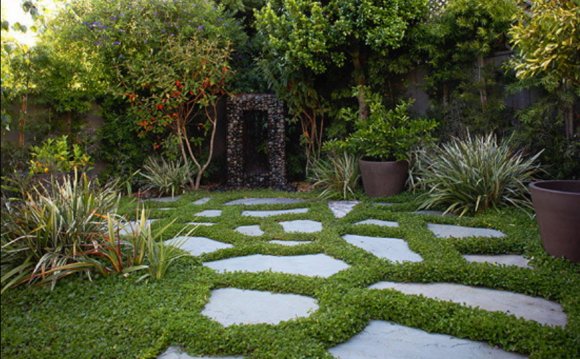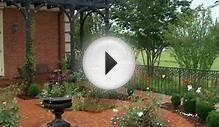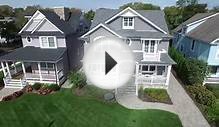
![[Click thumbnail to enlarge.]](/img/lyraedisservlet_command_getthumbnailimage_oid_3.jpg) It is essential to note all the existing conditions on an accurate base map when doing the site inventory (Figure 2). Utilities such as power lines, septic tanks, underground utilities and roof overhangs determine plant location. Use a surveyor's plat of your property for the boundaries and location of your home. Measure and note on the survey other structures and hardscape such as patios, driveways, or sidewalks. It is very important to hire a surveyor if you do not have a plat; guessing the location of boundaries can be a costly mistake.
It is essential to note all the existing conditions on an accurate base map when doing the site inventory (Figure 2). Utilities such as power lines, septic tanks, underground utilities and roof overhangs determine plant location. Use a surveyor's plat of your property for the boundaries and location of your home. Measure and note on the survey other structures and hardscape such as patios, driveways, or sidewalks. It is very important to hire a surveyor if you do not have a plat; guessing the location of boundaries can be a costly mistake.
Site Inventory.
Credit: Gail Hansen[Click thumbnail to enlarge.]
Remember the User
The users are typically you, your family, the family pets, and visitors, and each have their own needs. There are five things to consider: 1) how do you currently use the yard, 2) how do you want to use the yard, 3) aesthetically, how do you want it to look, 4) what is your maintenance style, hands-off or hands-on, and, 5) what is your budget.
It is very important to consider how you currently use the yard. For example-which entry is used by whom, where do the kids play and where does the dog usually run? (Figure 3) Thinking about how you currently use the yard, and how you want to use the yard in the future (Figure 4), determines the need to re-organize old spaces into new spaces and amenities. It is also important to remember the vehicles used by your family; driveways and parking are space intensive. Budget concerns include the materials, initial installation costs and the on-going maintenance costs. Determine the time and money you are willing to put into maintaining the plants and hardscape-be realistic about your intentions and ability.
Figure 3.Current use areas.
Credit: Gail Hansen[Click thumbnail to enlarge.] Figure 4.
Proposed use areas.
Credit: Gail Hansen[Click thumbnail to enlarge.]
Use a Form and/or Style Theme
There are many different landscape design themes- from simple to complex, but it is helpful to choose one to guide your plant and material selection. Think of a theme as the inspiration for your garden. Many people find it helpful to look in gardening magazines and books for ideas. This is a good start, but be aware that the gardens in the photos were picked because they are outstanding examples. Look at the photos with a critical eye to gather ideas that you can adapt to your passion level, your budget and your site. Before choosing a theme it is important to look at the surrounding views of your property. Decide if you want to open your yard, close your yard, or a little of both, to these views. In other words, do you want the garden to enclose the space around you and relate mostly to the house, or do you want the garden to open views and look outward, relating to the surroundings? This will give you a starting point to think about a theme. Care should be taken to choose appropriate themes for your yard based on the architecture, the type of neighborhood, the topography, and the regional landscapes. This is called "sense of place", which means it fits with the surroundings.
YOU MIGHT ALSO LIKE












